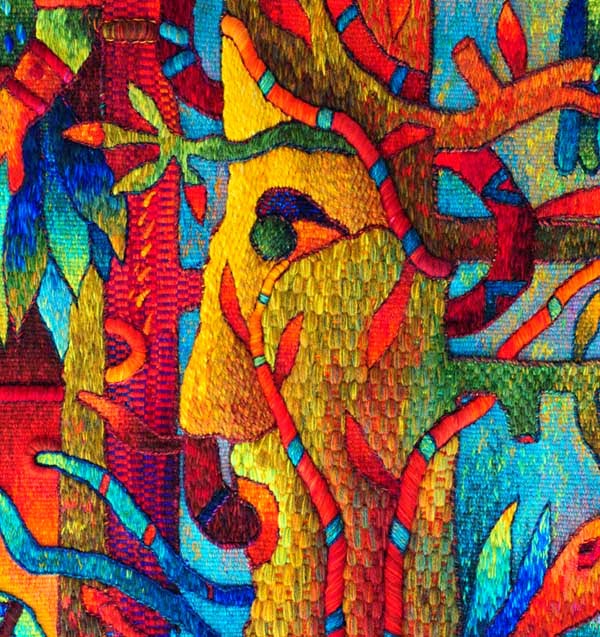How do Starving Artists
make a living? Any which way we
can. My neighbor offered me $100 to help
with the shearing of her 29 wards, and I jumped at the chance. I’da done it for free, ‘cause you never know when there might be another opportunity…
 I arrived early, craft
gloves in hand, and slowly made my way to this group in the pen. Related to llamas and camels, they have the
sweetest expressions, especially with ears pulled back.
I arrived early, craft
gloves in hand, and slowly made my way to this group in the pen. Related to llamas and camels, they have the
sweetest expressions, especially with ears pulled back.
I don’t have many photos,
because unfortunately I rediscovered Movie
on my camera and took a couple long ones right away. But that’s my green hand, making nice with my
favorite gal, a brown and white cutie whose name I can’t remember. The shearer came up from California; he travels a route, shaving away the miles. Hard work, but he makes good money. So here's how it goes:
 Each alpaca is walked in by leash, and they do remember, so some of 'em need coaching. There's this homemade pulley system whereby the hooves are bound, then when everyone's in place they stretch 'em out before you can say Ow-ee; reminded me of being pushed down in gym class while attempting center splits. But everyone else at the shearing was experienced, so the alpacas really suffered less than me.
Each alpaca is walked in by leash, and they do remember, so some of 'em need coaching. There's this homemade pulley system whereby the hooves are bound, then when everyone's in place they stretch 'em out before you can say Ow-ee; reminded me of being pushed down in gym class while attempting center splits. But everyone else at the shearing was experienced, so the alpacas really suffered less than me. “Avoid
standing in front of their faces,”
‘cause they spit and it stinks to high Heaven.
But I’d forget then notice their doe-eyes eerily following me. Don’t you dare; remember me? I live next door. Head held gently by the assistant, any sudden
jerks or signs of distress and everyone jumps on the animal and/or gear before
it hurts itself. There were about 8 of
us.
“Avoid
standing in front of their faces,”
‘cause they spit and it stinks to high Heaven.
But I’d forget then notice their doe-eyes eerily following me. Don’t you dare; remember me? I live next door. Head held gently by the assistant, any sudden
jerks or signs of distress and everyone jumps on the animal and/or gear before
it hurts itself. There were about 8 of
us.
My job was to help scoop up
the cuttings. Here’s a bit of useless
information: on sheep it’s wool; on alpacas it’s fiber.
I did a bit of Googling beforehand, searching for craft ideas in case I
could take home whatever’s not good enough for fiber artists. The longest hair is on their backs and
bellies; shorter along the neck and flanks (?), and the rest, known as
‘thirds,’ is the crafty stuff used for bird’s nests, dog beds and felting.

As it turned out, I could
take all the thirds I wanted, so I took every bag. Asked what I’d be doing with them (as an
artist), I had no idea but explained there have been times in my life when I’ve
passed up an abundance of some THING; convinced I’d return to collect more. Haven’t we all? And of course you never do; or they can’t be
found; or they’re all gone.
 That happened with a rare
seashell in Puerto Rico. Funny how the
brain conjures up images long after: I’m
standing on that isolated strip of sand, accessed by dinghy, surrounded by what
seemed like thousands of pink-and-white Sunrise Tellens. Oh, Captain, aren’t they
pretty? Look at ‘em all! They must be fairly common. Shell-pal Carmen became apoplectic when
she saw my small assortment, but during the next decade the spot was never
found again.
That happened with a rare
seashell in Puerto Rico. Funny how the
brain conjures up images long after: I’m
standing on that isolated strip of sand, accessed by dinghy, surrounded by what
seemed like thousands of pink-and-white Sunrise Tellens. Oh, Captain, aren’t they
pretty? Look at ‘em all! They must be fairly common. Shell-pal Carmen became apoplectic when
she saw my small assortment, but during the next decade the spot was never
found again. |
| Peruvian artist Maximo Laura |
I’ve other examples, but no
Sirree, I wasn’t gonna let that happen with the alpaca fiber, since they’re
only sheared once a year. So there they
sit: 15 garbage bags piled outside my front door. I bought a felting book on Amazon and there
are several ways to work the fiber, but they all look labor intensive, and
daunting.
But lo and behold, my
artist’s cooperative just sent notice of new felting classes coming soon. While waiting, I decided to try a project the
book claimed was for beginners: felted
stones. Why would you?
My hairy rocks came out
about as good as did my Berry Cobbler,
but you've got to start somewhere.
Half the stones were bald by morning, so I just incorporated the few
remaining in a ‘still life’ outside, and hope BC doesn’t find them too interesting.
My neighbors are so much
cooler in our 100 degree weather of late.
Aren’t they darling?



No comments:
Post a Comment
Add a comment